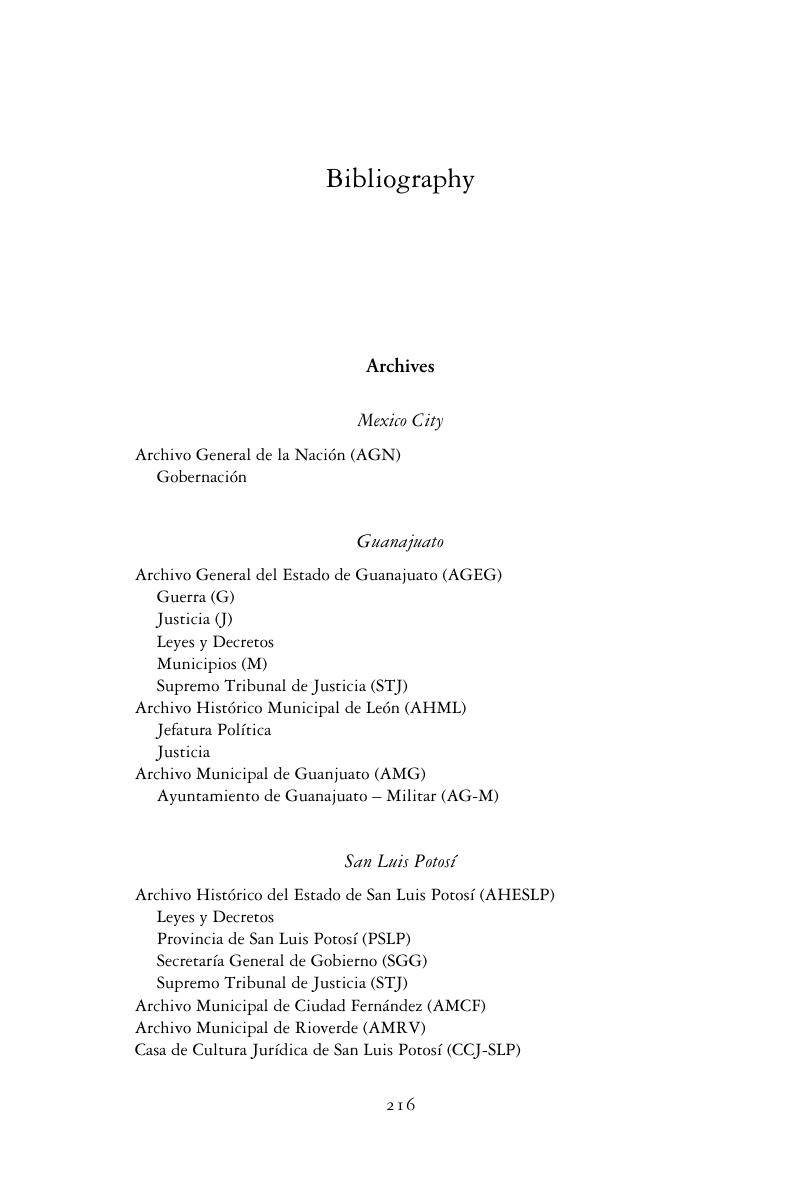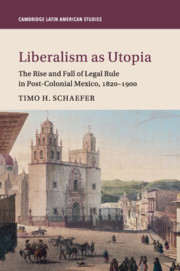Book contents
- Liberalism as Utopia
- Cambridge Latin American Studies
- Liberalism as Utopia
- Copyright page
- Dedication
- Contents
- Acknowledgments
- Introduction
- 1 Mestizo Towns
- 2 Family and Legal Order
- 3 Haciendas
- 4 Indigenous Towns
- 5 Dictatorship
- Conclusion: Law and Exception in the Making of Modern Mexico
- Bibliography
- Index
- Other Books in The Series
- References
Bibliography
Published online by Cambridge University Press: 09 August 2017
- Liberalism as Utopia
- Cambridge Latin American Studies
- Liberalism as Utopia
- Copyright page
- Dedication
- Contents
- Acknowledgments
- Introduction
- 1 Mestizo Towns
- 2 Family and Legal Order
- 3 Haciendas
- 4 Indigenous Towns
- 5 Dictatorship
- Conclusion: Law and Exception in the Making of Modern Mexico
- Bibliography
- Index
- Other Books in The Series
- References
Summary

- Type
- Chapter
- Information
- Liberalism as UtopiaThe Rise and Fall of Legal Rule in Post-Colonial Mexico, 1820–1900, pp. 216 - 238Publisher: Cambridge University PressPrint publication year: 2017



